Expert Q&A: Deborah Landau
By Amy Nelson
Deborah Landau is the Director of Ecological Management at the Maryland/DC Chapter of The Nature Conservancy, where she has worked since 2001. Her work focuses on restoration at more than 30 Conservancy preserves across Maryland and DC. She works with staff and partners to restore natural communities across the state, ensuring they are healthy and resilient in light of an uncertain climate future. Among the many restoration activities Deborah manages are prescribed burns, and she has planned and implemented more than a hundred of them over the course of her career in conservation. As a firefighter, she serves as Engine Boss and Firing Boss. Deborah is the project lead for the Potomac Headwaters Fire Learning Network, and she serves as adjunct faculty at Frostburg State University and Salisbury University. Before coming to The Nature Conservancy, Deborah worked on the MesoAmerican Biological Corridor for the World Bank, focusing on Belize, Nicaragua and Honduras. She holds a BS in International Environmental Studies and International Food and Agriculture, from Rutgers University, Cook College; an MS in Entomology and Plant Pathology from the University of Tennessee; and a PhD in Entomology and Plant Biology from Louisiana State University.
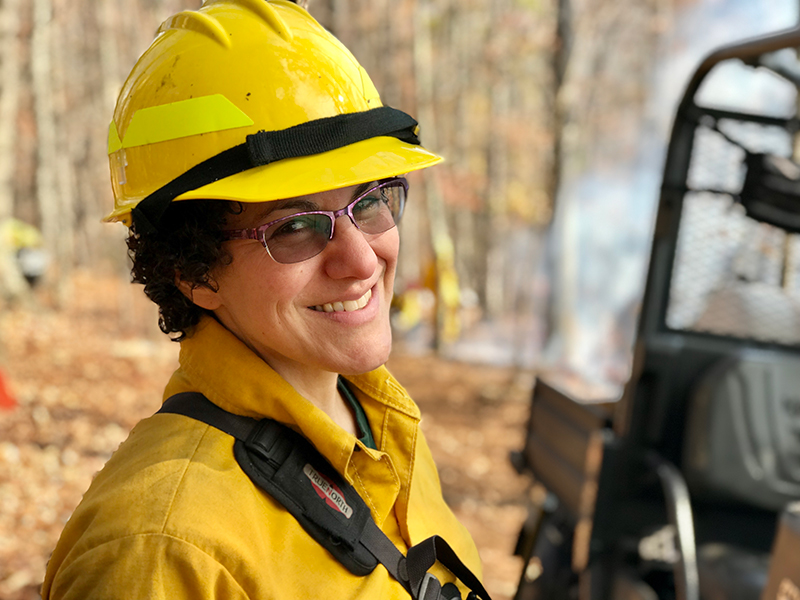
Your educational background was in entomology and plant biology. How did you become interested in fire?
My dissertation research looked at how land management impacts natural communities, specifically insects and plants. While doing this work, I became much more interested in land management and ecological restoration because it was just so clear that how you manage the land and what tools you use to restore could have such an enormous impact on native biodiversity. That made me want to work in ecological restoration.
I was researching the biodiversity of longleaf pine savanna, which is an extremely fire-adapted habitat. That really brought home to me the incredible influence that bringing fire back to a system can have on biodiversity. My research was comparing growing season burns and dormant season burns on native flora and fauna, and I was very floored by how much of a difference just the timing alone can have.
My work was focused in three areas: federal land, state land, and Nature Conservancy land. The state land was managed primarily for quail and quail hunters, and they were mostly doing dormant season burns because that is what benefited them. The burning on federal land was a combination of both dormant and growing season burns, depending on when they could get out there. The Nature Conservancy staff seemed to have a better understanding of the importance of burning when you’ll have the most high-quality effects on the biodiversity. It astounded me what a difference just a few months can make in terms of what returns. I was very impressed with the management philosophy on The Nature Conservancy land because it was so science driven. I really respected their work and wanted to work for them.
You mentioned the longleaf pine being a fire-adapted species. Can you talk about the “fire-adapted species continuum” and share some other examples of plants and animals that fall in different places along that continuum?
Fire-dependent species, which are at the most extreme end of that continuum, cannot persist without fire. Longleaf pine, for example, requires fire to encourage seedling growth. The seedlings get to a certain stage, and then they need fire to really shoot up. This also allows them to compete. If there are no fire hardwoods, other species will begin to take over and out-compete the longleaf pines, transforming an open savanna into a closed forest.
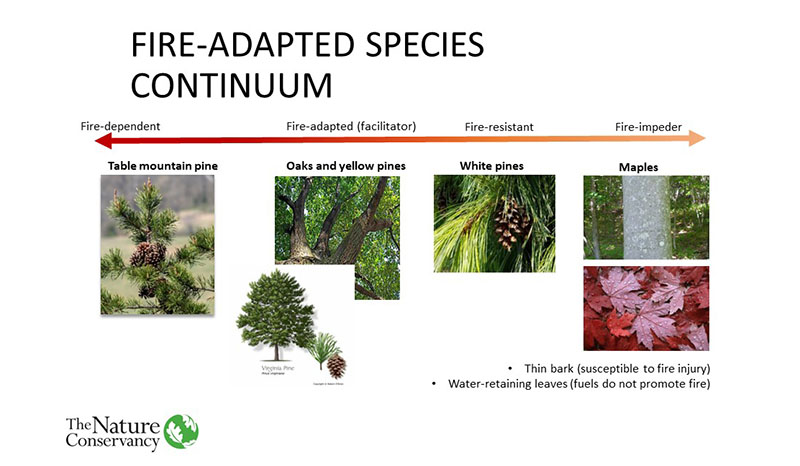
In the Central Appalachians, we have Table Mountain pine, which is a very different system. Table Mountain pinecones are serotinous; they are glued-shut with sap and require the heat of a fire to open up and release their seeds. Without fire, that tree will disappear, and that tree is endemic to the Central Appalachians. Without fire, the cones will eventually open when they dry up, perhaps in the middle of a hot summer the following year, but they’ll probably just desiccate. If they open up during a fire, however, the ground is perfectly receptive. It is dark and open, and it just had a nitrogen pulse, so the seeds are far more likely to germinate.
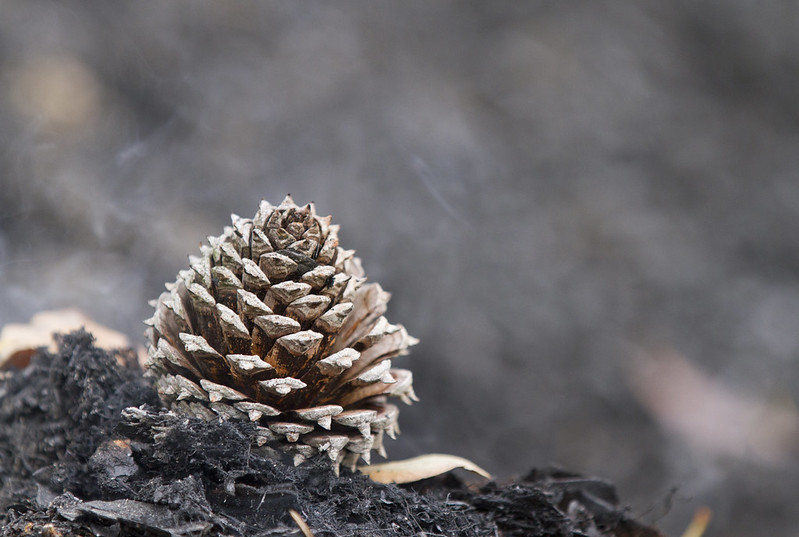
So that’s fire-dependent. Then you’ve got the fire-adapted species. These species do very well with fire, and they have a number of different adaptations. Oaks and some yellow pines, for example, have thick, chunky bark that insulates them from fire so they can survive. They also have components that encourage fire. Oaks have dry leaves that curl up, stack on top of each other and trap a lot of air when they fall. When a fire comes along, those dry leaves will pull it through and encourage it to continue moving across the landscape. Fallen yellow pine needles, which have resins in them, will also pull fire across the landscape. Both oaks and yellow pines are also able to survive a wound from fire. If they get burned, they compartmentalize the wound and heal over it. Often, trees that have evolved to grow in fire-prone areas are also very drought-tolerant and have very long taproots. This is important if we are going to talk about climate change. Those trees are very well-adapted to the increased stressors that we are going to have with higher temperatures and longer droughts.
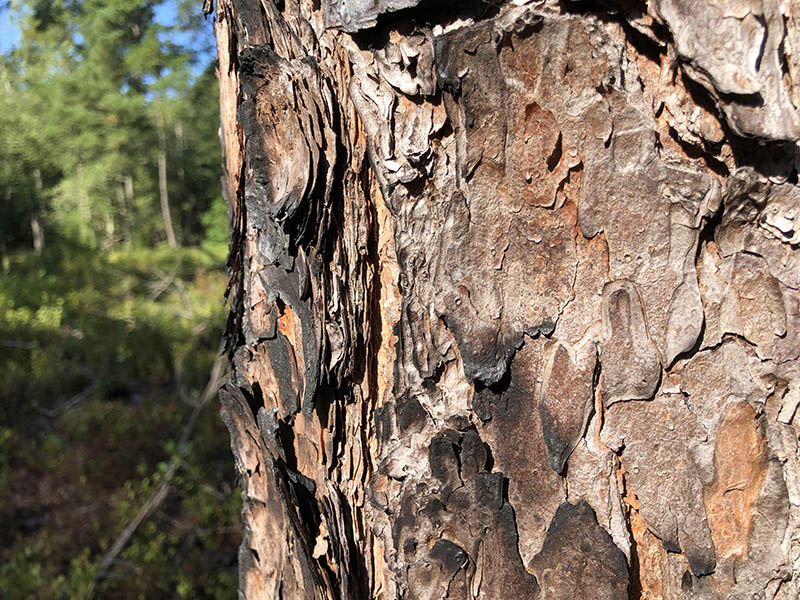
Then there are fire-resistant species, which tolerate fire very well at longer frequencies. Where oaks and yellow pines like a fire every five or seven years, white pines, which fall into the category of fire-resistant, tolerate fire once every 10 or 15 years. If a fire occurs too frequently, a seedling of a white pine will die when it is small. But if that seedling can get 10 or 15 years of growth, it will be big enough to survive fire. In fact, It will actually benefit from regular fire at this longer interval because it will help eliminate competition.
On the other extreme end of the spectrum, we have what we used to call fire-intolerant species, but we have begun calling fire suppressors. These are trees that, like gums and maples, have thin, smooth bark. If a fire comes through, chances are it will kill these trees. Instead of curly dry leaves, the maple and gum leaves are very flat. When they fall on each other, they trap moisture and create a thick, wet mat. If a fire comes through an area dominated by these trees, the fire will go out because it’s so wet. As fire suppressor species move in, they will outcompete more fire tolerant trees like white pines, and they will certainly outcompete fire-dependent trees. As you get more fire suppressor trees, like gums and maples, the whole area becomes wetter, more mesic. Mesophication is when the entire forest ends up being dominated by these water-loving trees. When that happens, and then we have a stressor such as a drought, the entire forest will be less resilient. Because they are adapted to live in wetter areas, they don’t have those super deep taproots, so they’ll be the first to get stressed and the first to die.
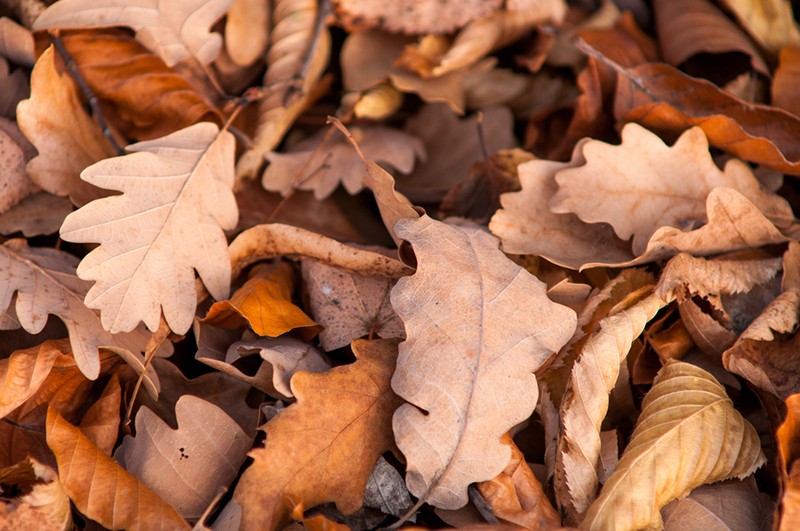
Let’s talk terminology. What is the difference between “managed burn,” “prescribed burn,” “managed fire,” and “ecological fire restoration?”
The difference between prescribed burn and managed burn is just semantics. We used to say prescribed burn, and then somebody did a marketing study and said, “’Prescribed’ sounds too medical; we should say ‘controlled.’” But none of this is ever one hundred percent controlled. We have gone back to saying prescribed burns because you literally write a prescription when you’re planning a burn. You write, “This is what’s going to happen. These are the parameters we need: this kind of weather; winds at this speed from this direction; humidity has to be between this and that, etc..” It is a very detailed document, and a legal agreement. You are legally bound to stay within the parameters of that prescription. When you request your burn permit, you are saying, “I will follow this prescription.” Prescribed burns are done for many different reasons, including simply reducing fuel in order to prevent a wildfire later.
Managed wildfire is a terrific tool that we’re seeing used more frequently. Managed wildfire is when you have a wildfire, and rather than just sending all of your forces to put it out as quickly as possible, you look at a map and say, “Well, this part of the wildfire is not near any structures and it’s heading towards this river, road, or natural fire break. We will just allow it to reach that point.” It is a wildfire, but you are managing it. You can also set a controlled burn into the wildfire to use up fuels that the wildfire is heading towards. Managing wildfire is a terrific way to use the natural landscape, or fire itself, to contain the fire while not having to put all your resources into extinguishing it. You might even end up with a little benefit because you’re still getting some fire on the landscape.
And then there is ecological fire restoration. Historically, most of North America used to burn at some scale or frequency. Ecological fire restoration is bringing fire back to an area where it had been removed by fire suppression—returning it to the landscape to restore ecological communities that historically existed there.
What are the steps to implementing a prescribed burn—from the initial assessment of a site to the post-burn monitoring?
Most Nature Conservancy preserves already have some sort of ecological significance, so as an ecologist managing Nature Conservancy land, my job is one hundred percent ecological restoration. I am always looking with an eye toward restoring habitat.
We begin by identifying an area we want to restore that we know would have historically been a fire-adaptive community. Then we look at a map and try to see where we could create a burn unit or a fire compartment. The burn “unit” is the area within which we want the fire to burn. Historically we would have said, “There is a rare plant here. Let’s make a box around it, bulldoze some fire lines, and burn the middle.” But that involves a lot of work and machinery and putting in those fire lines can cause a lot of negative environmental impact because you’re scraping the soil and you can bring in invasives.
These days what we try to do is find an existing natural fire break, such as a river, swamp, or road. (We have many logging roads on our preserves because so many of them historically were logged.) Often, that means burning many more acres than our actual intended target, but we have learned that that turns out to be a good thing.
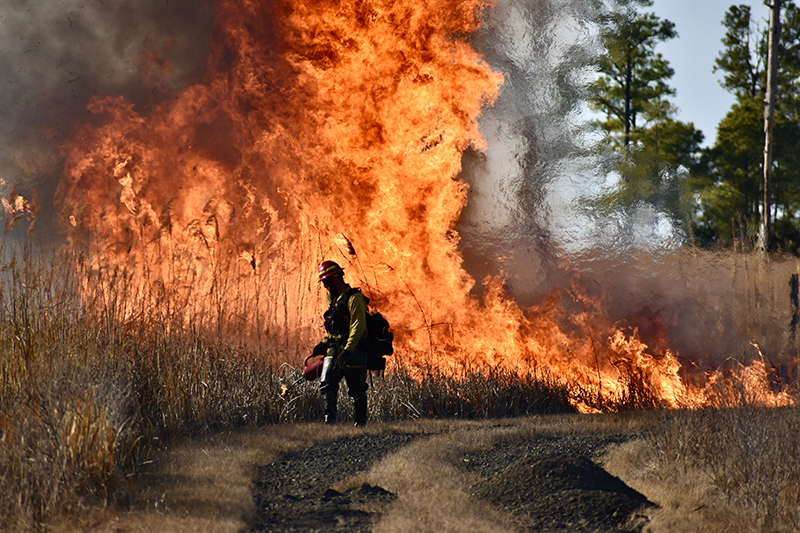
After we identify what we want to burn and create our boundaries, we look at a larger map and try to see where we do not want the smoke to go. Maybe there’s a community a few miles to the west, an airport to the north, or a highway to the south. We then determine wind directions under which we can safely burn. Once we have established that, then we can start to put together our plan.
Based on the fuels, we must think about how much humidity and wind we can tolerate. We also determine how large a crew and what kind of equipment we need. We write all that into the plan. Once we finish writing our plan, we must submit it to our regional fire manager. [This is typically someone in a state’s department of natural resources.] In Maryland, we have two fire managers (one for the Eastern Shore and one for Western and Central Maryland) and they are with the Maryland Department of Natural Resources Forest Service. If the regional fire manager approves the plan, the permit lasts for one year.
Once the regional fire manager has approved the plan and we approach our burn window, we go to the county forester, who will look at the maps and plan and determine whether or not the fire can safely occur. If it can, the county forester writes us a burn permit, which can last anywhere between one and three months. That is a pretty small window. Once we have that permit, we are good to burn. Then we look at the weather every single day until it looks like we are going to hit a day that is within the weather parameters set in our prescription.

About two days out, if it’s still looking good, I’ll send out an email request for the burn crew. I have dozens of people [who are certified to implement prescribed burns] on my list. I’ll say, “It looks like we might be burning on this preserve on this day. If you’re available, let me know.” The day before, I’ll send a “go/no-go” email. If the weather looks good, it’s a go and everybody meets. Even after all of those steps, we can still show up the next morning and determine that the burn isn’t going to happen because it is too wet, too dry, too windy, or that not enough people showed up for our crew. But if everything lines up, we will burn. When we’re ready to burn, we call the 911 centers for that county, so they know that if somebody calls in to report smoke in the area, it is our fire and it is under our control. The fire can smoke for days, so we’ll have somebody who continues to monitor it until it’s good and out.
We also do fire effects monitoring after the burn. We look at fuel consumption and how the fire burned under these particular conditions. We can even measure the temperature of the fire itself. We monitor to see what sort of vegetation is returning. We might measure the trees to see how much larger they grow after the burn. It is amazing how much faster fire-adapted trees will grow after a burn comes through. We have bio-acoustic boxes on several of our preserves where we can monitor bird activity in burned areas versus non-burned areas. We have many different types of monitoring occurring after burns, depending on the site.
Do you have any data or findings from the bio-acoustic studies that you can share?
I do have data, but it is not yet published. But we are finding much, much higher diversity and abundance in the areas that were burned versus the ones that were not burned, which is really exciting.
It sounds like understanding a site’s fire history is important in the initial assessment of a potential fire restoration site. What is the best way to determine that history? We obviously cannot restore to historic conditions, so how do you factor changing land use and climate into the restoration plan?
There are a number of different things you can do to understand a site’s fire history. One is to simply look at the species that are still on the property or that you know were there historically. I love to look at range maps of fire adapted trees. If you find that there are fire adapted trees in your area (e.g., pitch pine, shortleaf pine, southern red oak), you can search for range maps of those trees, and if you see that they historically existed in this particular area, that pretty much clues you in that this area would’ve burned.
What’s trickier is figuring out how often to burn. This isn’t something that a typical landowner can do, but we are doing a lot of fire scar studies. I mentioned how fire-adapted trees can compartmentalize and heal over when they are burned. You can take cuttings of those trees, even long after they’ve died, and see how frequently burns were occurring before we started fire suppression. That can give you an amazing window into how often fires historically occurred and when they were occurring. You can tell whether that fire scar sits on the earlywood or the latewood; on the growing season wood or the dormant season wood. That is a tremendous amount of information.
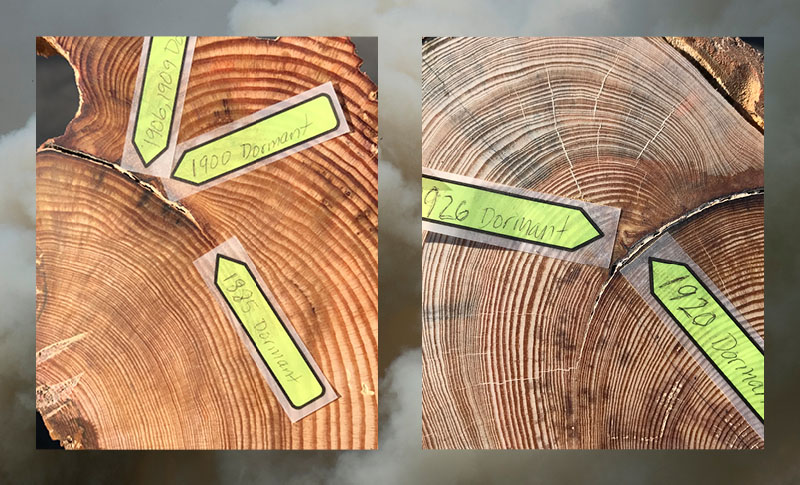
I strongly encourage all landowners to get a forest management plan. Reach out to your county forester. They are so knowledgeable about your area, and they will write you a management plan. If you’re interested in restoring it with fire, and they feel that is appropriate, they will work that into the plan. That is a terrific way to document that your property should be managed with fire.
Many of our readers are ecological restoration practitioners, but they may not be certified to do prescribed burns. What is required to become certified and where can people find certified professionals to help with this work?
The best thing to do is to reach out to your County Forester. If there is some ecological significance to your land or if they have availability, there’s a good chance that your County Forester can arrange a burn on your property for a small fee. They will write the plan, come out with their crew, and do conduct the burn. If that works out, that is terrific. Unfortunately, a lot of County Foresters are really busy. There are private companies for hire that will come in and conduct the burn for you, but they can be expensive.
There are some grants that might help pay for that. There are some programs, such as the Wetlands Reserve Program and numerous county programs, that have cost shares that can help pay for this. Again, if you reach out to your county forester, they could connect you with these programs.
You’ve had the opportunity to experience something that very few people get to experience. What does it feel like to take part in a prescribed burn for ecological restoration?
When it is one of our properties, there is always a lot of anxiety, because you really do want it to go correctly. But a good prescribed burn is actually very boring! If it all goes smoothly, it should truly be a controlled burn in which the fire is going where you want it to go. There is a lot of “hurry up and wait.” Everyone gathers at a certain time in the morning, but then you often must wait for the weather to be in prescription, such as for the humidity to drop.
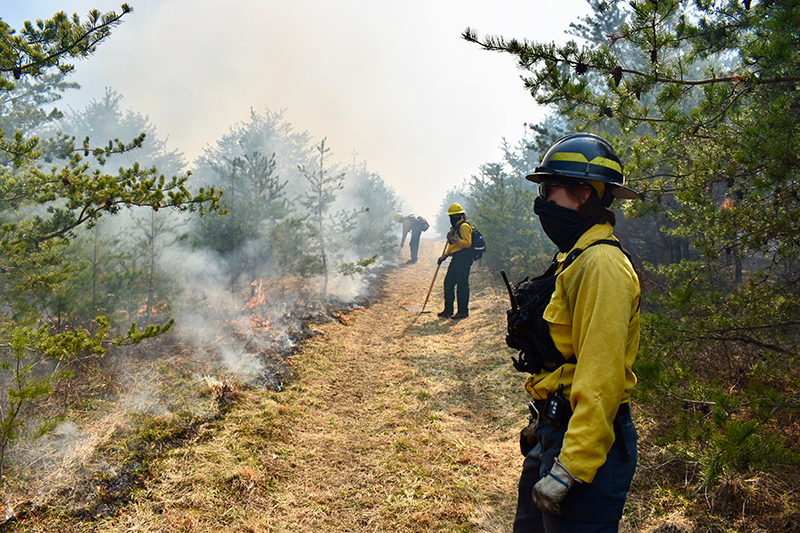
We usually start with a backfire, so we are burning against the wind. That way, we create what we call “black.” That is very slow and smoky, and pretty anti-climactic. Once we have enough black established around the unit, things speed up. Then we can turn it into a head fire, where the fire is racing into itself. Then it’s more exciting, but that is usually at the end of the day when most of the unit has burned, you’re tired and you just want to wrap it up. A good fire should not be overly exciting.
What about the post-fire recovery? At what point do you begin seeing regeneration, and what does that look, sound, and feel like?
That, for me, is the most exciting part of this work! I am always astounded at how quickly we start to see green-up and effects. Even during a fire, you see species responding. Raptors love to circle a smoke column. They will always show up because they know that things are scurrying out, all the rodents are running away. Almost immediately after the fire, you’ll see more bird activity. One of the reasons we think we have so much more bird diversity in areas that we have been burning is because there are better flight corridors, and it is easier for them to see and hunt. Bats love areas that have been burned for very similar reasons. It’s easier to hunt, and we create excellent habitat by creating snags.
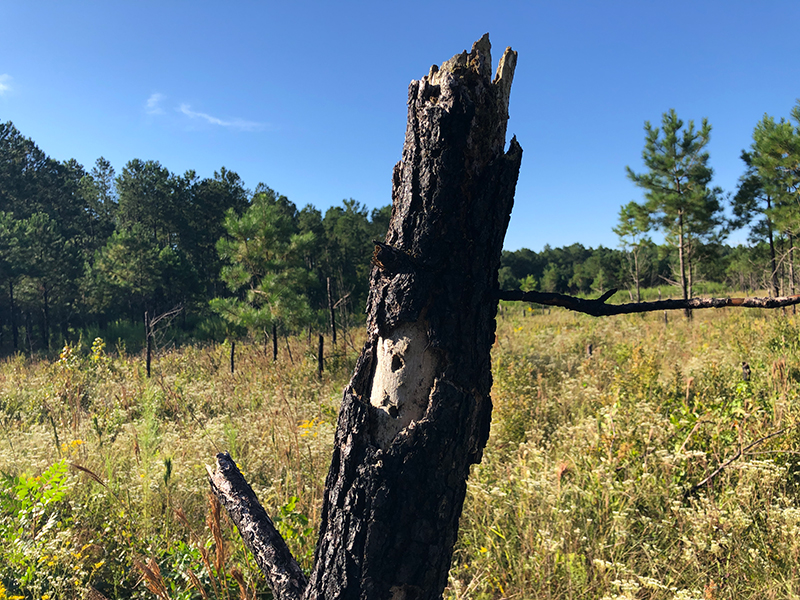
Some orchids will show up in weeks. Orchids love fire, and they’ll start sending up leaves incredibly quickly after fire.
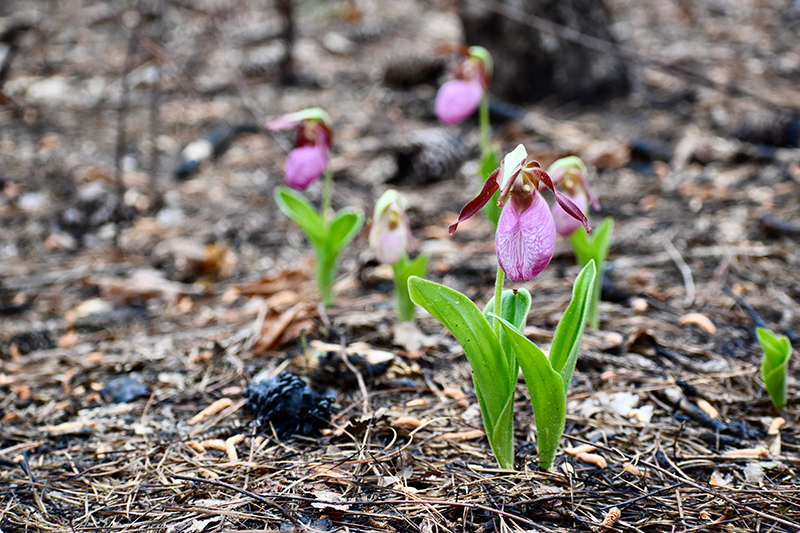
We don’t really know all the factors that trigger the germination of herbaceous plants. It could be the heat pulse. Some people think there is a chemical reaction to the smoke. It could be the nitrogen release. It could be that after the fire, the ground is physically darker, so it warms up faster. It could just be that more light is getting to the ground. We don’t know, and for each species, it might be a whole different trigger.
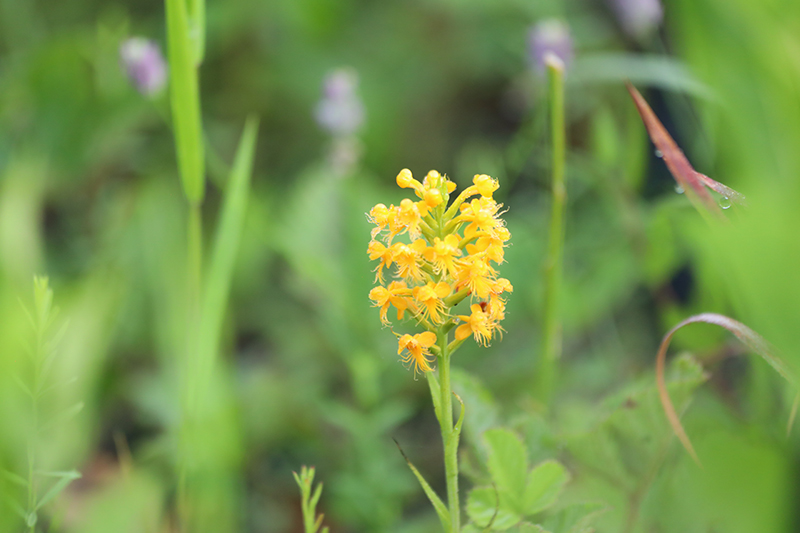
In addition to the permitting process and things like unexpected shifts in weather, what are some other practical challenges involved in implementing a prescribed burn?
We often run into neighbors who just don’t want us to burn near them. We really try to work with them. For example, we have a neighbor in Western Maryland who has stables and runs sort of an Airbnb for horses. When we started talking to her about burning on the preserve, she was very concerned about the horses. So, we try not to burn when the wind would push smoke towards her barn, or if it’s a really good day to do the burn and that might happen, we’ll call her and ask, “Do you have any horses right now, any guests?” If she doesn’t, we’ll burn. If she does, we won’t. It is very important to work with neighbors as well as you can.
I’ve been very surprised in both directions, though. I’ve spoken to some neighbors I was sure would be resistant to our burning, who have said something to the effect of, “Well, it’s about time you bring fire back to the land. I remember my granddad used to burn those fields all the time to keep them open. I have hated seeing them close in.” We have had other neighbors who have just said, “Absolutely not. I don’t want this.” If we explain to them that doing these prescribed burns will reduce the chance of an uncontrolled wildfire and make their properties safer, that often helps. Once most people see the effects of the burns, they tend to become more open.
We had a highly successful public viewing event in 2019. We did a burn at our Sideling Hill Creek Preserve, which is located near a major highway. We got a grant that allowed us to set up a little viewing table at a gas station across the road. We had coffee and cookies, and a staff member explaining what was happening. It was terrific. A lot of people came to watch the burn progress, including forestry students from Allegany College of Maryland. I’ll admit that some of their comments were like, “It’s like watching paint dry,” because the fire just creeps through the understory. But at the same time, they were excited to be part of the action.
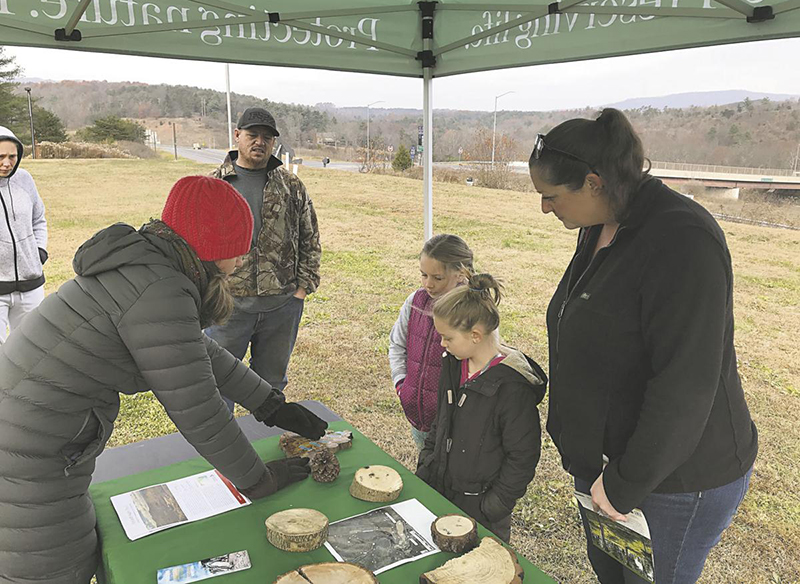
What do we know about the relationship between fire and invasive species? Not just invasive plants, but invasive insects, animals.
There’s a lot we know, and much more we don’t know. With invasive plants, it’s tricky because some of them love fire. In many cases we’ve had to adjust the time of year we burn in order to prevent the invasive species from outcompeting the native species. For example, on a preserve on the Eastern Shore, a very hot dry site, we did one spring burn and non-native lespedeza just absolutely took over the site. Then we read up on it and learned that if you burn in the fall, when it’s full of seed, you can burn up the seed and therefore reduce the spread of the plant. So we switched gears and started burning in the fall. Now we’ve got the plant under control and have been able to switch back to burning in the spring.
In some cases, you can make it worse by burning, such as that. In some cases, burning does knock back the invasive species, but often it’s a matter of frequency. For example, autumn olive is invading a lot of old fields and open grasslands we’re trying to restore. If you just do one burn of autumn olive, it’ll knock it back, but then come back stronger. So, if you want to really knock it back, you must have repeated burns to use up all the energy that’s stored in those roots.
Insects are also very tricky. We are doing a lot of fire now in the Central Appalachians of Western Maryland. Unfortunately, the emerald ash borer has really devastated ash trees there, so we’re dealing with a much, much higher number of snags than we would’ve historically encountered in a system like that. That absolutely makes the burn more challenging because if those snags are burning up high, they can send embers much further than otherwise. There is also another issue with the emerald ash borer. As the dead ash trees burn, they start to fall, so it is physically more dangerous now to have an igniter walking through the area.

A huge step forward we’ve made with prescribed fire is that we now have drones that drop little spheres that ignite on the ground. We call them “ignition drones” and they have made our burns significantly safer. We can use a regular burn crew to do all the black lining around the edge, and then send the drone to fill in the middle. That makes conducting our burns much faster. So, while invasive insects can make burns much more dangerous, that is countered a little bit with the drone which makes it a lot safer.
So when considering prescribed burns, it sounds like in addition to understanding a site’s fire history, it is important to know what surrounds the burn site, communicate with neighbors, know what you might be up against in terms of invasive species, and then find whatever information you can about how things like frequency or timing can work for you rather against you.
Yes, exactly. I can’t say enough that we are learning every single day. There’s so much we don’t know. It is absolutely a learning process.
Speaking of learning, let’s talk about research. Zoonotic diseases are on many minds lately, and we have written about the relationship between these diseases and ecological health. The Nature Conservancy is conducting a study with Frostburg University on fire and Lyme disease. Can you tell us about that?
With climate change, we are finding throughout the US, including Western Maryland, that black-legged ticks are spreading further west than they used to. Since black-legged ticks are moving west, so is Lyme disease. Lyme disease used to never be seen in Western Maryland, and now, unfortunately, it is fairly common. We reached out to Dr. Rebekah Taylor, a researcher at Frostburg State University, was looking at increased virulence of Lyme in Western Maryland. We asked her if she would also look at the effects of fire.
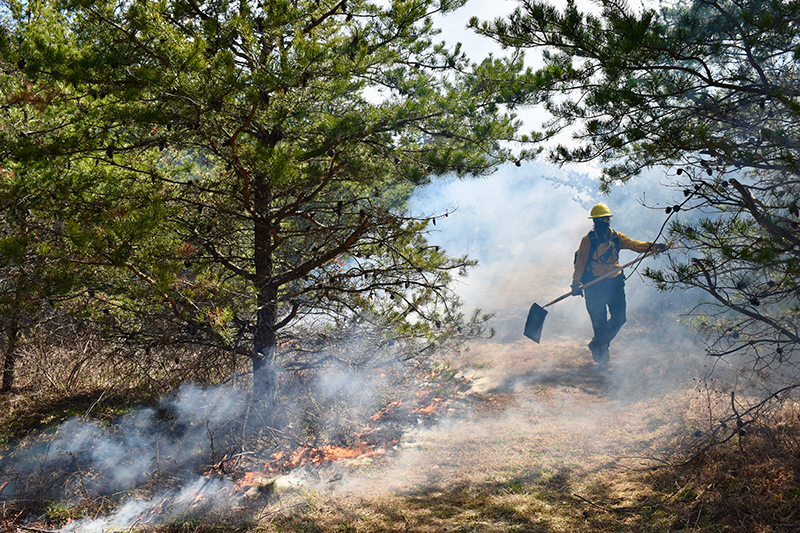
At Sideling Hill Creek Preserve, the same place where we had that viewing station, we have areas we’ve burned and areas that we haven’t burned. Dr. Taylor had a grad student go out and monitor the differences in the burned and non-burned areas. After one year of data, she did find fewer ticks in the burned area, but we want to continue this study. There have been much bigger studies, conducted by Elizabeth Gleim of Hollins University, that have shown that if you’re burning a large area frequently, you can reduce the amount of Lyme disease in the area by 97%. There is less Lyme because there are fewer tick encounters. There are fewer ticks because ticks really like it dark and damp. They desiccate very easily, so reducing the build-up of fuels, thatch, and vegetation makes it a far less suitable tick habitat.
Can you tell me about other fire-related studies that the Nature Conservancy is conducting or partnering to conduct and how they might inform restoration?
We have a study looking at the spread of an invasive species, Microstegium (Japanese stiltgrass) after fire. We only have one year of data so far. That data shows that it increased, which is not surprising because I think it’s similar to the autumn olive, where one burn will probably make more of it grow, and you need repeated burns to really knock it back.
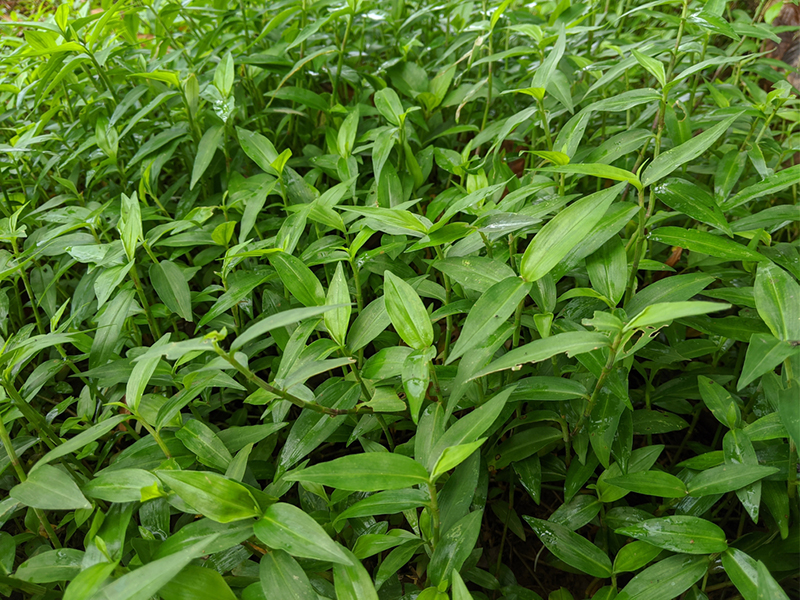
That’s a study that we intend to continue. We’re also looking at the effects of fire on forest structure—how it’s affecting a lot of the fire-adapted trees, like large oaks. We took dozens of tree cores from trees at one preserve and we’re looking at how much faster they grew before the fire was suppressed. They slowed down during the fire suppression years, and now we’re curious to see if they’re going to speed up again since we started burning again. [Visit The Nature Conservancy in Maryland/DC website or check out the Working With Fire web page to learn more about TNC MD/DC’s fire-related research.]
Part of the frustration with what we do is that we have had almost a hundred years without fire.
What type of research do you think is most needed—both in fire restoration generally, and specifically in your region?
Part of the frustration with what we do is that we have had almost a hundred years without fire. It’s not like we can just pick it right back up, and there is a lot of subtlety to bringing fire back. For example, on the Eastern Shore of Maryland, we have enormous shortleaf pines that are absolutely fire-adapted, but they are in areas that have gone so long without fire that there is a thick layer of duff. The trees send tiny feeder roots into the duff. If your first burn is hot, you’re going to burn up these little roots and you could kill trees you’re trying to save. So, the first entry burn, and even the second or third burn, must be a very carefully performed. I would love more research into first entry burns, specifically how to ensure that the species you’re trying to protect are not negatively impacted.
This is a no-brainer, but I would also like to research the effects of climate change. Our burn season has changed. We used to start burning in mid-March and we were lucky if we could get a couple burns in. We’re now successfully burning in February, which is crazy. I would be interested to see how the changed burning season is affecting burns in other parts of the region/country. We’ve done some successful June burns, but we’ve stopped because of white-nose syndrome [caused by a cold-loving fungus (Pseudogymnoascus destructans)], which is killing bats, and many have been federally listed. Some of now-endangered bats roost in trees in the early summer when rearing their young. So now, we can no longer burn then.
There are so many connections that come back to fire that I would love to be able to study. I’d love to follow the bat connection. I’d love to follow the bird connection. I’d love to follow the invasive connection. I’d also like to study the weather. Sometimes I think a lot of the weather models are based on historical weather conditions and those are changing now.
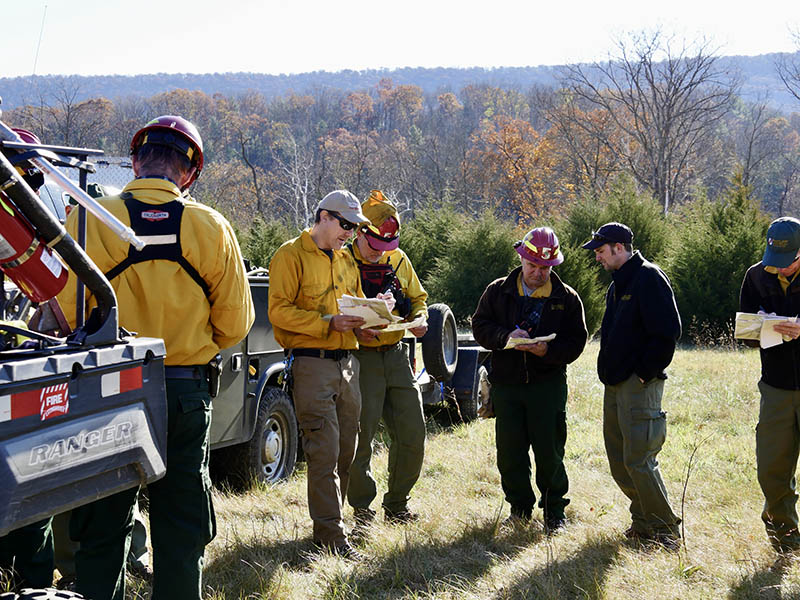
The Nature Conservancy has been doing controlled burns for 60 years. What are some of the key lessons that the organization has learned in that time and how is that knowledge being shared?
I’m going to start by saying partnerships—the importance of partnerships. Our first burns were very small and targeted, but more and more, we are understanding that bigger is better. It takes almost the same amount of energy to burn a 10-acre unit as it does for a 100-acre unit. The more you can burn, the better, and to really get fire on the landscape at scale, you have to work with partners. We are so lucky to have the Maryland Department of Natural Resources and the Fish and Wildlife Service as terrific partners. So many of our preserves border state land, so we may partner with them on burns. We have MOUs with Maryland DNR and the Fish and Wildlife Service. When they need help, we help them. When we need help, they help us. We can double or triple our capacity by burning together. By collaborating with our partners—sharing our knowledge, experiences, and training with each other —we can accomplish so much more. It’s not just about our Nature Conservancy preserves or about their DNR land; it’s about restoring our entire landscape together.
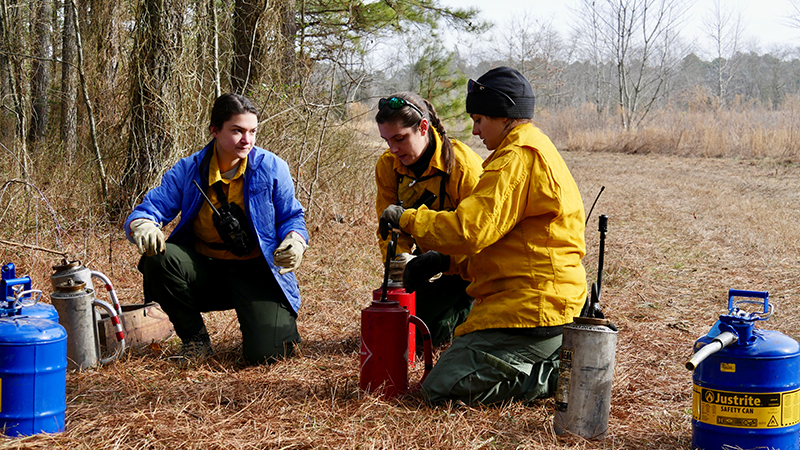
Have you partnered with Indigenous communities?
In the West, The Nature Conservancy has been working very successfully with Indigenous people for years. Here on the East, it’s a little bit of a tougher nut to crack, but we’re getting there. In Maryland, the majority of our fires over the past 15,000 years were set by Indigenous people, and we cannot say that we are truly restoring the landscape if we’re not including those people in these burns. We are working very hard to make contact with our Indigenous communities. It is hard because they were pushed out so long ago, but some of them are still here. We’re working hard to reconnect with them and partner with them to bring fire back to their land.
We recently partnered with members of the Nause-Waiwash Band of Indians, who are indigenous to the Eastern Shore, on a very successful burn on land adjacent to the Blackwater National Wildlife Refuge. Historically the Nause-Waiwash would have burned the marshes for thousands of years. Now, ironically, if they burn the marsh, it might be seen as arson because they do not have permits. Through the Indigenous Peoples Burning Network, we connected with members of the tribe. We were able to give the Tribe fire gear and equipment and help them go through training necessary to participate in burns. We worked together to write a burn plan.

Then, we scheduled with the Maryland DNR and the Blackwater National Wildlife Refuge a day where a burn was already occurring on adjacent lands, and we included their burn as part of the burn. We were able to get fire back on their land, which was so heartening. One of the most rewarding moments in my entire career was being able to burn on this property, knowing that they were once again putting fire on their land in a manner that complied with all permits and checks currently required.
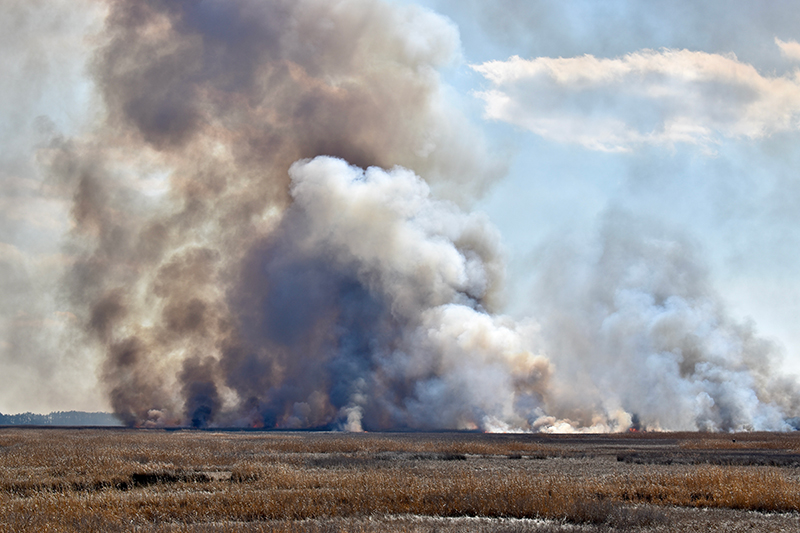
Were there things you learned about the site from tribal members and elders that you wouldn’t have known otherwise?
[Tribal member and owner of the land, Jeff Kirwan] talked a lot about the importance of fire for muskrat hunting. It was part of their culture. They would burn the marsh and then go out and hunt muskrat. He had his handmade muskrat traps ready to set out after the fire. Fire has a whole different level of importance for his culture. I’m an ecologist through and through, so for me it’s all about restoring the ecology and getting the plants back and animals back. For him, it was a spiritual experience bringing fire back. His words [for what we were doing] weren’t “restoring,” but essentially bringing back what their culture had always been doing. It was very moving. He kept saying thank you to us, and we were saying thank you to him.
What do we know about prescribed burns and carbon storage? What is pyrogenic carbon and how do prescribed burns impact its production?
Pyrogenic carbon is formed when a fuel incompletely combusts. It turns into charcoal, essentially. Historically, that would’ve happened all the time during regular burns, and that is such an important way to lock in carbon. When it gets locked in the soil, it’s locked in there for thousands of years. It is one of the most stable forms of carbon that we have, and it comprises an incredible amount of carbon in our system. Controlled burns enable us to lock carbon back into the system. When you have these wildfires that are so hot, too hot, you have complete combustion. Everything is volatized. Controlled burns are so different, because they are much cooler, and you end up with that carbon locked into the soil.
Pyrogenic carbon also affects how water is retained. Having more pyrogenic carbon in the soil aids in water retention and there’s also chemical factors. It also makes the nutrients in the soil more readily available to the plants.
Do you have any final words to share with Leaf Litter readers?
As a restoration ecologist, it is so rewarding to see the effects of bringing fire back to the landscape. I really think that a lot of these plants and organisms are just waiting for fire to come back. It’s very encouraging to see how much more acceptance and understanding there is about the importance of bringing fire back to the landscape.
I really think that a lot of these plants and organisms are just waiting for fire to come back.
